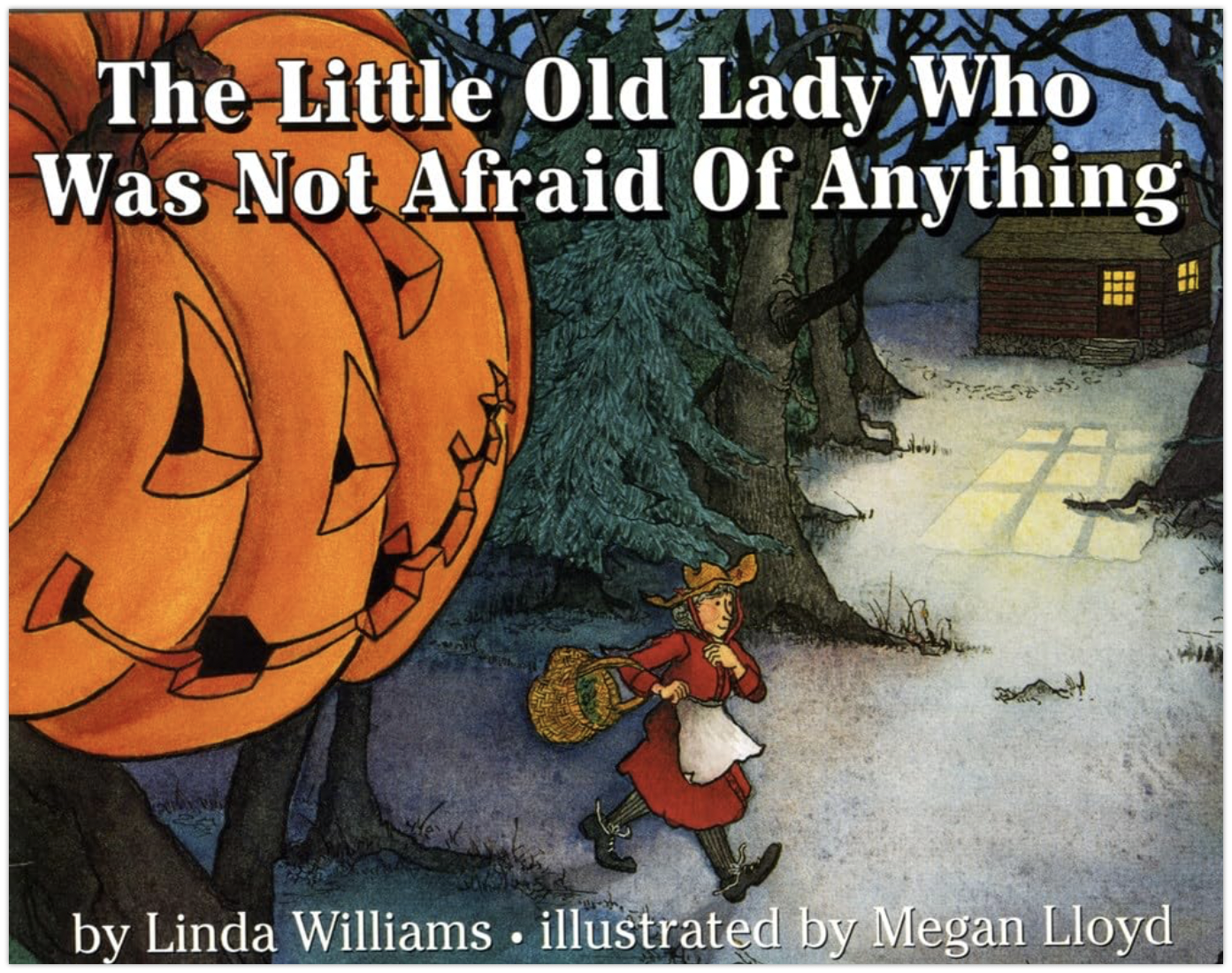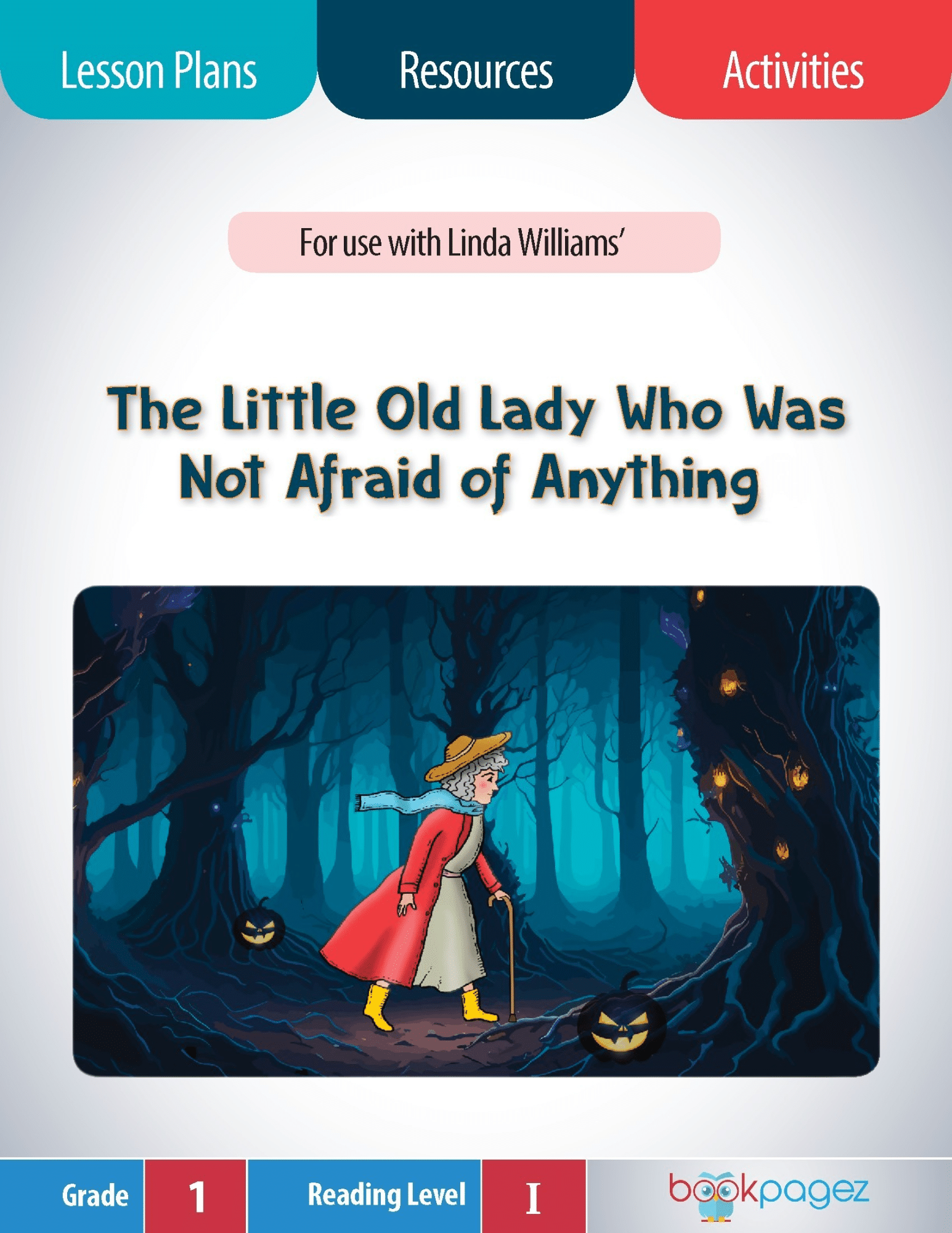
Use The Little Old Lady Who Was Not Afraid of Anything by Linda Williams to strengthen your students' comprehension skills, build their vocabulary, and help them understand how words work.
This timeless, slightly spooky story follows a brave little old lady who meets shoes, pants, gloves, and even a pumpkin head on her walk through the woods. Each item tries to frighten her, but she finds a clever way to put them all to use. Students will enjoy the playful repetition and lively illustrations, all while practicing important comprehension strategies like retelling and summarizing, understanding text structure, and synthesizing. In addition, the word work activity focuses on the short "i" vowel sound, giving students the chance to connect phonics practice with this memorable read-aloud.
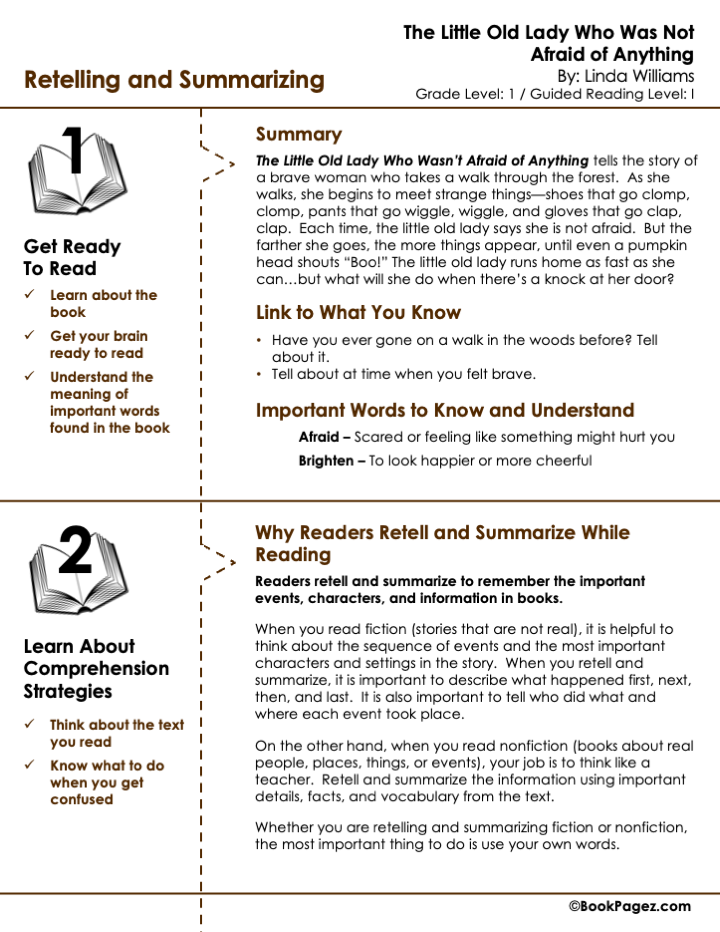
The repetitive, patterned storyline in The Little Old Lady Who Was Not Afraid of Anything makes it an ideal text for practicing retelling and summarizing. Students can easily sequence the events as the little old lady meets each new item in the forest, tell what happens when they chase her home, and summarize how the story ends on a happy note. This structure helps students organize their thinking and clearly retell the story using characters, setting, and major events.
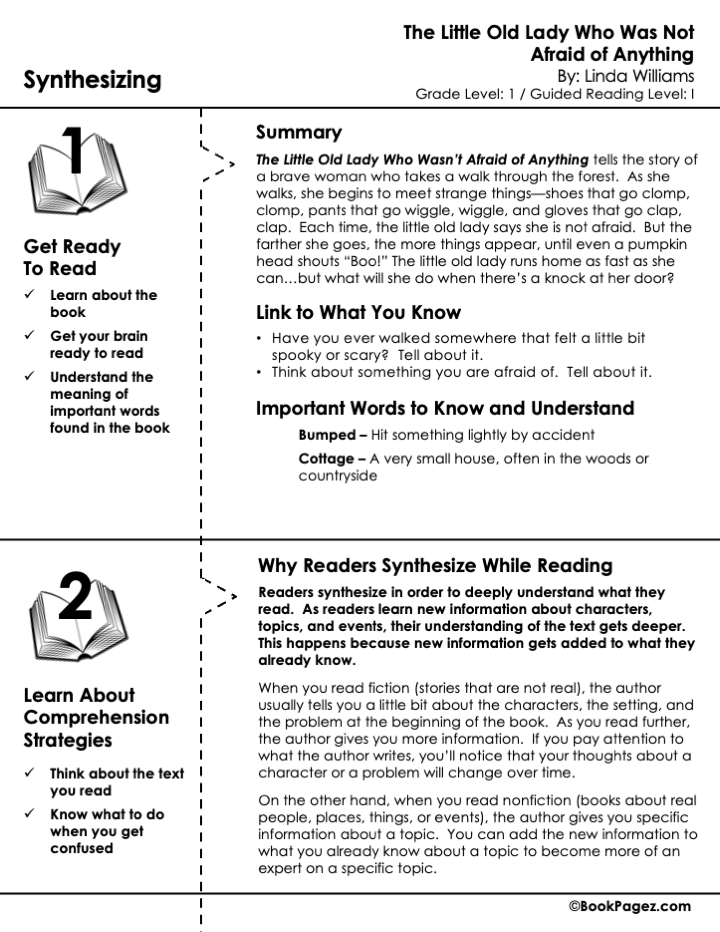
As students read, they can combine what they know about being scared with what they learn from the little old lady's actions. At first, she says she isn't afraid of anything, but by the end, she uses the very things that tried to scare her to create something useful—a scarecrow. This shift encourages students to synthesize new ideas, drawing connections between the little old lady's clever solution and the bigger lesson that things that seem scary at first may turn out to be helpful.
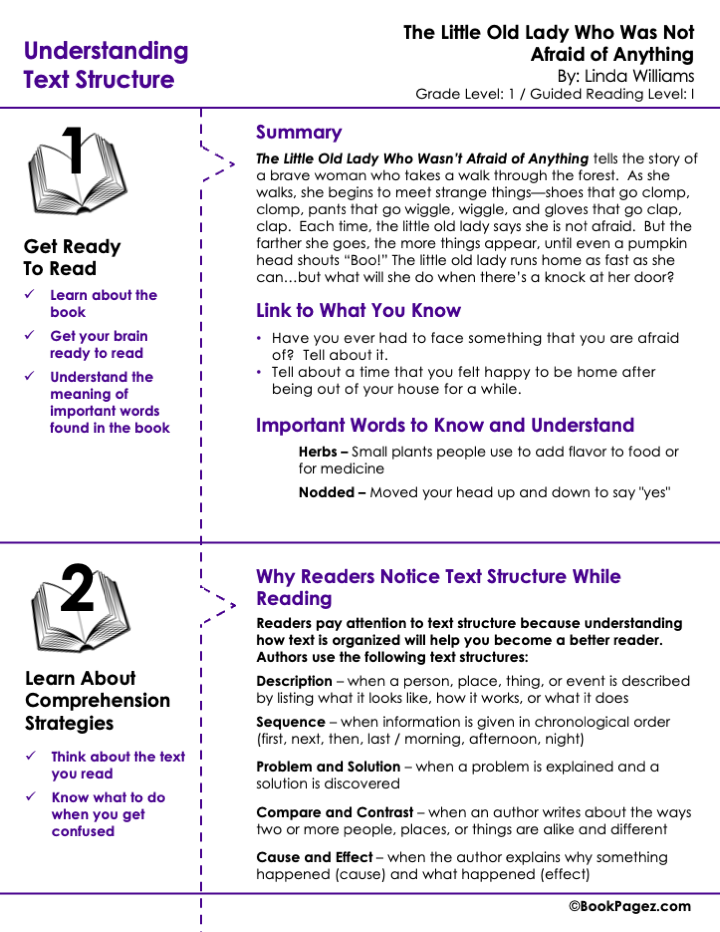
This book offers multiple opportunities to study text structure. The cause-and-effect relationship between the little old lady and the clothing items, the sequencing of events as each new object appears, and the problem-solution ending provide a foundation for meaningful discussion. With its clear pattern and playful repetition, the text provides students with practice in identifying and explaining how authors organize stories to make them engaging and easy to follow.
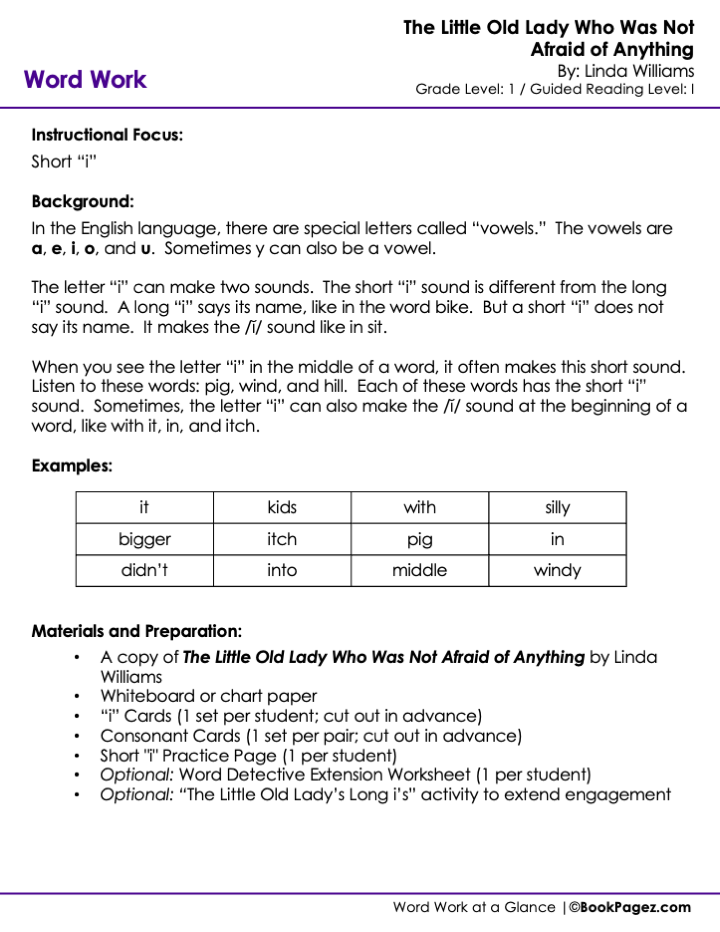
This word work lesson plan and set of teaching resources use The Little Old Lady Who Was Not Afraid of Anything by Linda Williams as a springboard for instruction focused on vowel sounds.
By anchoring word study to the text, students will benefit from seeing how short "i" sounds are used in context before engaging in both guided and independent practice with vowels.
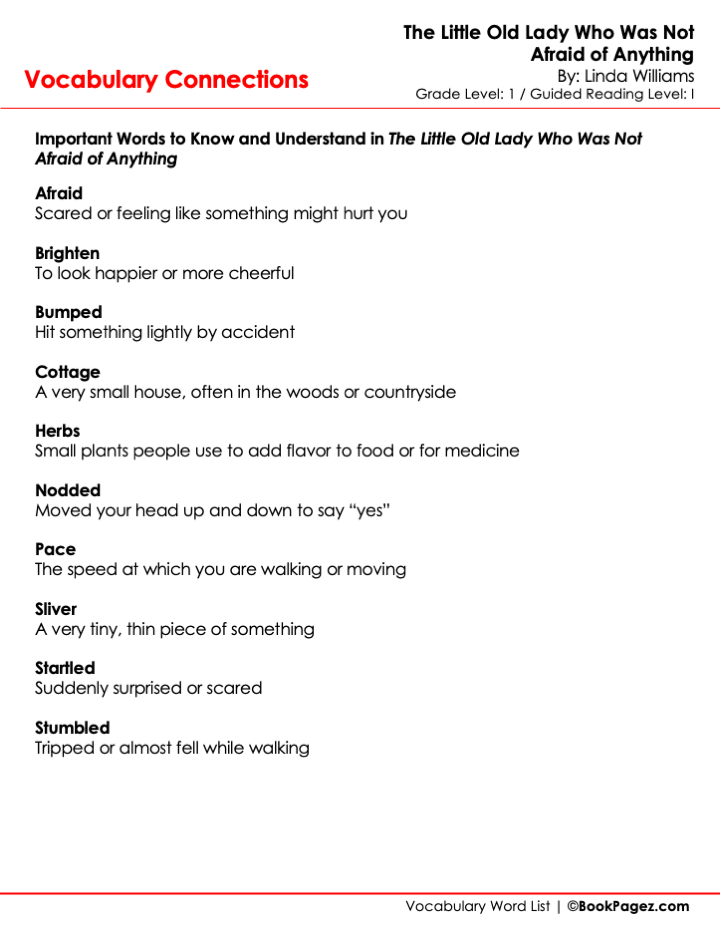
This set of vocabulary development resources for The Little Old Lady Who Was Not Afraid of Anything highlights key words that are essential for students to understand while reading the story. Through engaging activities such as word games, word-to-definition and picture matching, and word categorization practice, students will build the vocabulary they need to comprehend this story—and many others—with confidence.
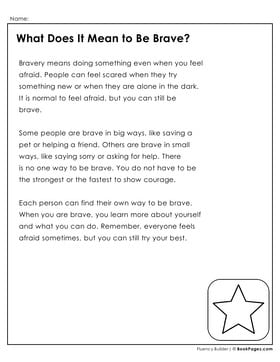
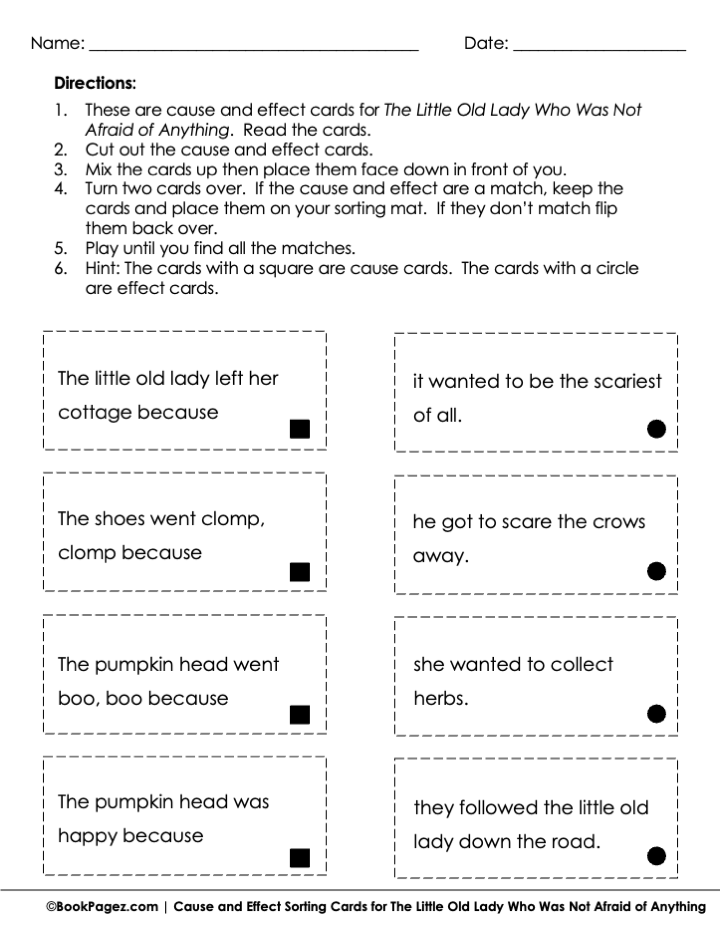
Read The Little Old Lady Who Was Not Afraid of Anything then have some fun matching cause and effect sentences from the book. By using these cause and effect cards, students will demonstrate both their comprehension of the text and their understanding of cause and effect relationships in a hands-on and interactive way.
This resource includes matching/sorting cards and a sorting mat for four cause and effect sentences in The Little Old Lady Who Was Not Afraid of Anything. Each cause card is marked with a square and each effect card is marked with a circle, making it easy to support students who struggle with matching cause and effect relationships.
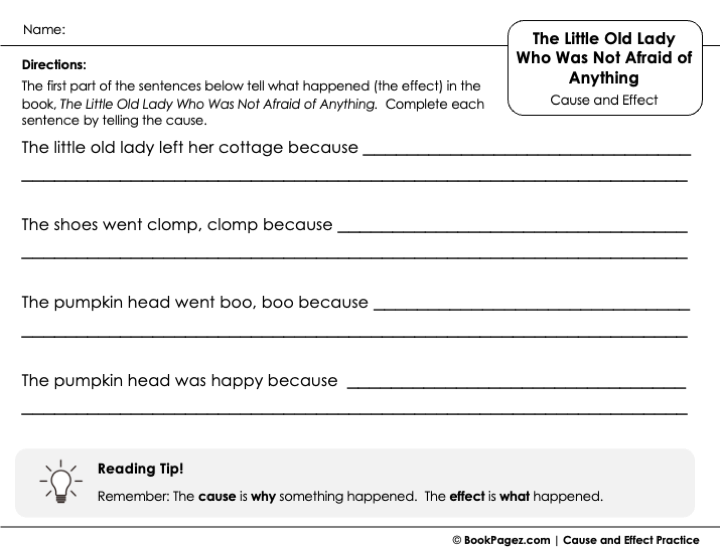
Understanding cause and effect is a key comprehension and language skill. The text structure of The Little Old Lady Who Was Not Afraid of Anything includes several examples of cause and effect relationships, making it easy to use as a springboard for modeling or independent practice.
This simple resource includes four sentence stems. Each sentence stem presents an effect. Students will use what they know about the book to fill in the cause of the effect.
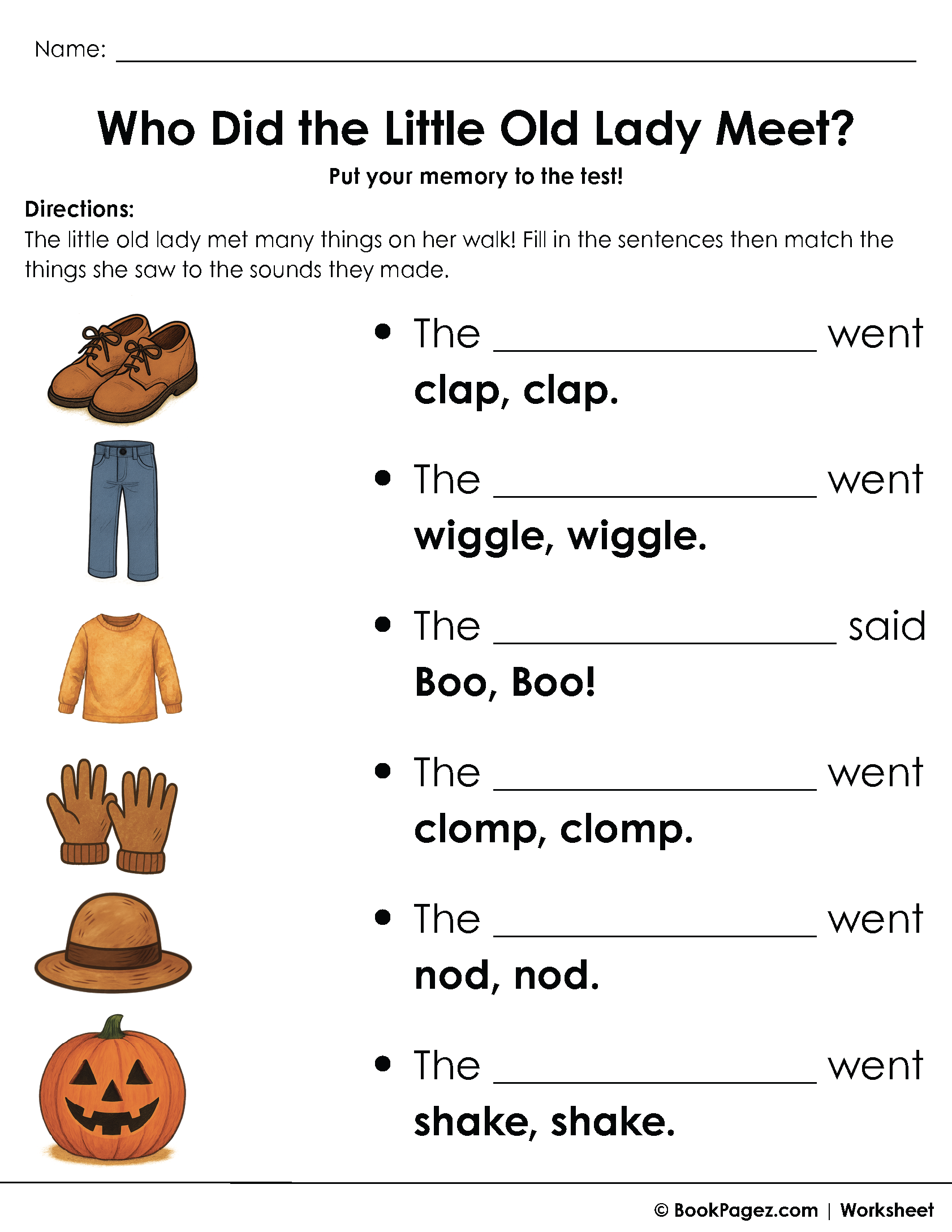
In The Little Old Lady Who Was Not Afraid of Anything by Linda Williams, students put their memory to the test as they revisit the spooky, fun walk through the forest. In this engaging activity, students recall who the little old lady met on her walk, fill in sentences, and match each object to the sound it made. Through this hands-on task, students strengthen comprehension, sequencing, and recall skills while enjoying the story's playful rhythm and repetition.

Bring The Little Old Lady Who Was Not Afraid of Anything by Linda Williams to life with these interactive retelling cards! Perfect for strengthening comprehension, sequencing, and vocabulary, these cards turn story review into a hands-on, high-engagement learning experience.
Students will use the cards to recall events, connect sounds to objects, and retell the story in creative ways. Whether used during an interactive read-aloud, in small groups, or at literacy centers, these cards help students build confidence as they explore rhythm, repetition, and onomatopoeia from the book.
With multiple ways to use them—sequencing, acting out, sound matching, or partner retelling—this resource makes it easy to adapt for different learning styles and classroom settings. The concrete visuals support memory and comprehension while keeping students actively involved in the reading experience.
